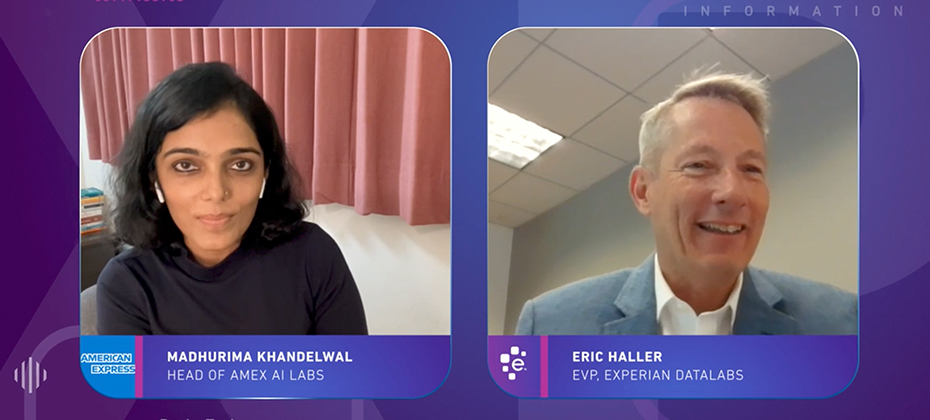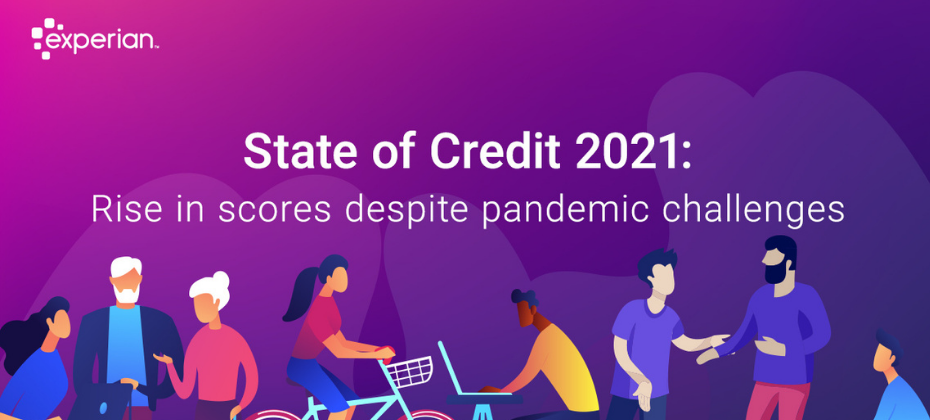Models & Scores

In today’s evolving and competitive market, the stakes are high to deliver both quantity and quality. That is, to deliver growth goals while increasing customer satisfaction. OneAZ Credit Union is the second largest credit union in Arizona, serving over 157,000 members across 21 branches. Wanting to fund more loans faster and offer a better member experience through their existing loan origination system (LOS), OneAZ looked to improve their decisioning system and long-standing underwriting criteria. They partnered with Experian to create an automated underwriting strategy to meet their aggressive approval rate and loss rate goals. By implementing an integrated decisioning system, OneAZ had flexible access to data credit attributes and scores, resulting in increased automation through their existing LOS – meaning they didn’t have to completely overhaul their decisioning systems. Additionally, they leveraged software that enabled champion/challenger strategies and the flexibility to manage their decision criteria. Within one month of implementation, OneAZ saw a 26% increase in loan funding rates and a 25% decrease in manual reviews. They can now pivot quickly to respond to continuously evolving conditions. “The speed at which we can return a decision and our better understanding of future performance has really propelled us in being able to better serve our members,” said John Schooner, VP Credit Risk Management at OneAZ. Read our case study for more insight on how automation and PowerCurve Originations Essentials can move the needle for your organization, including: Streamlined strategy development and execution to minimize costly customizations and coding Comprehensive data assets across multiple sources to ensure ID verification and a holistic view of your prospect Proactive monitoring and real-time visibility to challenge and rapidly adjust strategies as needed Download the full case study

As credit volumes recover from lows observed in 2021, lenders face new challenges – from increasing demand in customer expectations, to heightened competition, market volatility and a fierce war on talent. Many lenders have incorporated the foundational elements of credit analytics and seen significant initial returns. Now, it’s time for lenders to unlock even greater growth opportunities and operational efficiencies by exploring AI-powered solutions. Experian presented on a recent webinar hosted by Lendit Fintech, where Srikanth Geedipali, Senior Vice President of Global Analytics and AI for Experian, joined a panel of industry experts with representation from OPY and Citibank, to speak on how lenders can differentiate themselves by unlocking the power of advanced technologies such as AI and ML to address these emerging challenges. Watch the full webinar, NextGen Applications of AI in the Credit Lifecycle, and learn more about: Emerging trends in the AI/ML space that will drive innovation and differentiated solutions Use-cases for AI/ML across the lending lifecycle and how to leverage MLOps to industrialize analytics and improve speed and agility of decision-making How advanced technologies have driven impact for lenders of all sizes This webinar is a part of Lendit Fintech’s webinar series. To learn more about how leveraging AI/ML can help optimize your lending strategies, contact us today. Learn more about Ascend Intelligence Services

Lenders are under pressure to improve access to financial services, but can it also be a vehicle for driving growth? With the global pandemic and social justice movements exposing societal issues of equity, financial institutions are being called upon to do their part to address these problems, too. Lenders are increasingly under pressure to improve access to the financial system and help close the wealth gap in America. Specifically, there are calls to improve financial inclusion – the process of ensuring financial products and services are accessible and affordable to everyone. Financial inclusion seeks to remove barriers to accessing credit, which can ultimately help individuals and businesses create wealth and elevate communities. Activists and regulators have singled out the current credit scoring system as a significant obstacle for a large portion of U.S. consumers. From an equity standpoint, tackling financial inclusion is a no-brainer: better access to credit allows more consumers to secure safer housing and better schools, which could lead to higher-paying jobs, as well as the ability to start businesses and get insurance. Being able to access credit in a regulated and transparent way underpins financial stability and prosperity for communities and is key to creating a stronger economic system. Beyond “doing the right thing," research shows that financial inclusion can also fuel business growth for lenders. Get ahead of the game There is mounting regulatory pressure to embrace financial inclusion, and financial institutions may soon need to comply with new mandates. Current lending practices overlook many marginalized communities and low-income consumers, and government agencies are seeking to change that. Government agencies and organizations, such as the Consumer Financial Protection Bureau (CFPB) and Office of the Comptroller of the Currency (OCC), are requiring greater scrutiny and accountability of financial institutions, working to overhaul the credit reporting system to ensure fairness and equality. As a lender, it makes good business sense to tackle this problem now. For starters, as more institutions embrace Corporate Social Responsibility (CSR) mandates—something that's increasingly demanded by shareholders and customers alike—financial inclusion is a natural place to start. It demonstrates a commitment to CSR principles and creates a positive brand built on equity. Further, financial institutions that embrace these changes gain an early adopter advantage and can build a loyal customer base. As these consumers begin to build wealth and expand their use of financial products, lenders will be able to forge lifelong relationships with these customers. Why not get a head start on making positive organizational change before the law compels it? Grow your business (and profits) To be sure, financial inclusion is a pressing moral imperative that financial institutions must address. But financial inclusion doesn't come at the expense of profit. It represents an enormous opportunity to do business with a large, untapped market without taking on additional risk. In many instances, unscorable and credit invisible consumers exhibit promising credit characteristics, which the conventional credit scoring system does not yet recognize. Consider consumers coming to the U.S. from other countries. They may have good credit histories in their home countries but have not yet established a credit history here. Likewise, many young, emerging consumers haven't generated enough history to be categorized as creditworthy. And some consumers may simply not utilize traditional credit instruments, like credit cards or loans. Instead, they may be using non-bank credit instruments (like payday loans or buy-now-pay-later arrangements) but regularly make payments. Ultimately, because of the way the credit system works, research shows that lenders are ignoring almost 20 percent of the U.S. population that don't have conventional credit scores as potential customers. These consumers may not be inherently riskier than scored consumers, but they often get labelled as such by the current credit scoring system. That's a major, missed opportunity! Modern credit scoring tools can help fill the information gap and rectify this. They draw on wider data sources that include consumer activities (like rent, utility and non-bank loan payments) and provide holistic information to assist with more accurate decisioning. For example, Lift Premium™ can score 96 percent of Americans with this additional information—a vast improvement over the 81 percent who are currently scored with conventional credit data.1 By tapping into these tools, financial institutions can extend credit to underserved populations, foster consumer loyalty and grow their portfolio of profitable customers. Do good for the economy Research suggests that financial inclusion can provide better outcomes for both individuals and economies. Specifically, it can lead to greater investment in education and businesses, better health, lower inequality, and greater entrepreneurship. For example, an entrepreneur who can access a small business loan due to an expanded credit scoring model is subsequently able to create jobs and generate taxable revenue. Small business owners spend money in their communities and add to the tax base – money that can be used to improve services and attract even more investment. Of course, not every start-up is a success. But if even a portion of new businesses thrive, a system that allows more consumers to access opportunities to launch businesses will increase that possibility. The last word Financial inclusion promotes a stronger economy and thriving communities by opening the world of financial services to more people, which benefits everyone. It enables underserved populations to leverage credit to become homeowners, start businesses and use credit responsibly—all markers of financial health. That in turn creates generational wealth that goes a long way toward closing the wealth gap. And widening the credit net also enables lenders to uncover new revenue sources by tapping new creditworthy consumers. Expanded data and advanced analytics allow lenders to get a fuller picture of credit invisible and unscorable consumers. Opening the door of credit will go a long way to establishing customer loyalty and creating opportunities for both consumers and lenders. Learn more

Credit scores hold the key to many aspects of our financial lives. Whether qualifying for a mortgage, insurance, or a smartphone plan, financial institutions rely on credit reports — a document detailing how responsibly a person has used credit accounts in the past — to decide if they should approve your financing application. However, here's the problem: because today's scoring system leans heavily on a person’s credit history to generate a credit score, it leaves out large segments of the United States population from accessing credit. According to a recent Oliver Wyman report, an estimated 28 million U.S. consumers are considered ”credit invisible," while another 21 million are deemed "unscorable," meaning they don’t have the types of accounts that have been traditionally used to generate a credit score. Using the traditional credit-scoring formula, certain populations, such as communities of color and low-income consumers, are left behind. Now, times are changing. A modern approach to credit scoring can significantly improve the financial inclusion of millions of U.S. consumers and correct past and present inequities. Tapping into advanced technologies that leverage expanded data assets can produce powerful results. A cycle of exclusion: The limitations of conventional credit scoring A big part of the problem lies with how credit scores are calculated. Between payment history and length of accounts held, a consumer’s credit history accounts for 50 percent of a FICO credit score — the credit score used by 90 percent of top lenders for credit decisions. In other words, the credit system rewards people who already have (or can get) credit and penalizes those that cannot or don't yet have credit. For those who do not have credit, their financial behaviors — such as timely rental and utility payments, bank account data and payday loan installment payments — may not get reported to credit bureaus. As a result, consumers without a credit history may appear as credit invisible or unscorable because they don't have enough tradelines to generate a score. But they also can’t get credit to improve their score. It creates a cycle of exclusion that’s hard to break. Who gets left behind? According to the latest research, the limitations on the traditional credit scoring system disproportionately impact certain communities: Low-income: 30 percent of those in low-income neighborhoods are credit invisible, and 16 percent are considered unscorable, compared with just 4 percent and 5 percent, respectively, in upper-income neighborhoods.1 Communities of color: 27 percent of Black and 26 percent of Hispanic consumers are either credit invisible or unscorable, while only 16 percent of white consumers are.1 Immigrants: People who have recently arrived in the United States can lack a credit history here, even if they may have had one in their home country. Meanwhile, undocumented immigrants, who don’t have a Social Security number, can find it difficult to get a credit card or use other financial services. Young adults: 40 percent of credit invisibles in the U.S. are under the age of 25,1 with 65 percent of 18- to 19-year-olds lacking a credit score. Being labeled unscorable or credit invisible can hinder participation in the financial system and prevent populations from accessing the socioeconomic opportunities that go with it. Why are certain individuals and communities excluded? There are often complex — and valid — reasons for why many consumers are deemed unscorable or credit invisible. For example, newcomers may appear to be credit invisible because haven’t yet generated a credit history in the U.S., although they may have a solid score in their home country. Young consumers are also a common category of unscorable or credit invisible people, largely because they haven't acquired credit yet. Only 35 percent of 18- to 19-year-olds have a credit score, while 91 percent of 25- to 29-year-olds do. However, those who can quickly get a credit history typically come from wealthier households, where they can rely on a creditworthy guarantor to help them establish credit. Finally, some consumers have had negative experiences with the financial system. For instance, a prior default can make it difficult to access credit in the future, which can result in an extended period without credit, eventually leading to being labelled unscorable. Others may distrust the mainstream financial system and choose not to participate. Underpinning all this are racial disparities, with Black and Hispanic consumers being classified as unscorable and credit invisible at significantly higher rates than white and Asian consumers. According to the Consumer Financial Protection Bureau (CFPB), Black and Hispanic people, as well as low-income consumers, are more likely to have “scant or non-existent” credit histories. Financial inclusion is an equity issue Traditional credit scoring places big barriers on certain communities. Without access to credit, marginalized communities will continue to face challenges. They will lack the ability to purchase property, secure business and/or personal loans and deal with financial emergencies, further widening the wealth gap. Since credit scores are used to decide loan eligibility and what interest rate to offer, those with low or no credit rating tend to pay higher interest rates or are denied desired loans, which compounds financial difficulty. The impact is profound: a significant percentage of the population struggles to access basic financial services as well as life opportunities, such as financing an education or buying a home. Without the ability to generate a credit score, unscorable or credit invisible consumers often turn to less-regulated financial products (such as payday loans or buy now pay later agreements) and pay more for these, often locking them in a vicious cycle. Consumers who are credit invisible or unscorable often end up paying more for everyday transactions. They may be required to put up hefty deposits for housings and utilities. Auto and homeowners insurance, which use credit score as a factor in setting rates, may be more expensive too. Consider how much this could impede someone’s ability to save and build generational wealth. Financial inclusion seeks to bring more consumers into the financial system and enable access to safe, affordable financial services and products. With the right technology on your side, there are solutions that make it easier to do so. Tap into technology Banks, credit unions and other lending institutions are well positioned to move the needle on financial inclusion by embracing expanded definitions of creditworthiness. By seeking out expanded FCRA-regulated data with wider sources of financial information, financial institutions can find a vast untapped pool of creditworthy consumers to bring into the fold. Technology makes achieving this goal easier than ever. New credit scoring tools, like Lift Premium™, can give lenders a more complete view of the consumer to use for credit decisioning. It combines traditional credit data with expanded FCRA-regulated data sources, helping lenders uncover more creditworthy consumers. Lift Premium can score 96 percent of U.S. consumers, compared to just 81 percent that conventional scoring systems do now. By applying machine learning to expanded data sets, Lift Premium can build a fuller and more accurate view of consumer behaviors. Moreover, the 6 million consumers whose scores are now considered subprime could be upgraded to prime or near-prime by analyzing the expanded data that Lift Premium uses. The opportunity presented by financial inclusion is significant. Imagine being able to expand your portfolio of creditworthy borrowers by almost 20 percent. The last word With a renewed focus on social justice, it’s no surprise that regulators and activists alike are turning their attention to financial inclusion. A credit-scoring system that allows lenders to better evaluate more consumers can give more people access to transparent, cheaper and safer financial products and the socioeconomic benefits that go along with them. New models and data assets offer additional data points into the credit scoring system and make it possible for lenders to expand credit to a greater number of consumers, in the process creating a fairer system than exists today. Early adopter lenders who embrace financial inclusion now can gain a first-mover advantage and build a loyal customer base in a competitive market. Learn more Download white paper 1Oliver Wyman white paper, “Financial Inclusion and Access to Credit,” January 12, 2022.

Chatbots, reduction of manual processes and explainability were all hot topics in a recent discussion between Madhurima Khandelwal, Vice President and Head of DataLabs at American Express®, and Eric Haller, Executive Vice President and head of Experian DataLabs. The importance of AI’s role in innovation in the financial services space was the focus of the recent video interview. In the interview, Khandelwal highlighted some of the latest in what American Express DataLabs is working on to continue to solve complex challenges by building tools driven by AI and Machine Learning: Natural language processing has come a long way in even the last few years. Khandelwal discussed how chat bots and conversational AI can automate the simple to complex to enhance customer experience. Document recognition and processing is another leading-edge innovation that is useful for extracting and analyzing information, which saves staff countless manual hours, Khandelwal said. Fairness and explainability are consistently brought to the forefront especially in financial services as regulators are looking at ways to prevent AI/ML from causing bias for the consumer. Khandelwal showcased how there is extreme rigor in each part of creating their models and how human oversight and training are primary drivers for how they stay on top of this. As for innovation advice, Khandelwal points out that it’s important to be aware that AI and innovation are not always interchangeable, and companies need to think through whether a problem needs to be solved through AI/ML models before charting ahead. Another major key to the equation is the data. In all use cases, the undercurrent of innovation in any form is dependent on the data being used. Learn more about this topic and what Harry Potter has to do with women in data science. Watch the Interview

Artificial intelligence is here to stay, and businesses who are adopting the newest AI technology are ahead of the game. From targeting the right prospects to designing effective collections efforts, AI-driven strategies across the entire customer lifecycle are no longer a nice to have - they are a must. Many organizations are late to the game of AI and/or are spending too much time and money designing and redesigning models and deploying them over weeks and months. By the time these models are deployed, markets may have already shifted again, forcing strategy teams to go back to the drawing board. And if these models and strategies are not being continuously monitored, they can become less effective over time and lead to missed opportunities and lost revenue. By implementing artificial intelligence in predictive modeling and strategy optimization, financial institutions and lenders can design and deploy their decisioning strategies faster than ever before and make incremental changes on the fly to adapt to evolving market trends. While most organizations say they want to incorporate artificial intelligence and machine learning into their business strategy, many do not know where to start. Targeting, portfolio management, and collections are some of the top use cases for AI/ML strategy initiatives. Targeting One way businesses are using AI-driven modeling is for targeting the audiences that will most likely meet their credit criteria and respond to their offers. Financial institutions need to have the right data to inform a decisioning strategy that recognizes credit criteria, can respond immediately when prospects meet that criteria and can be adjusted quickly when those factors change. AI-driven response models and optimized decision strategies perform these functions seamlessly, giving businesses the advantage of targeting the right prospects at the right time. Credit portfolio management Risk models optimized with artificial intelligence and machine learning, built on comprehensive data sets, are being used by credit lenders to acquire new revenue and set appropriate balance limits. Strategies built around AI-driven risk models enable businesses to send new offers and cross-sell offers to current customers, while appropriately setting initial credit limits and managing limits over time for increased wallet share and reduced risk. Collections AI- and ML-driven analytics models are also optimizing collections strategies to improve recovery rates. Employing AI-powered balance and response models, credit lenders can make smarter collections decisions based on the most predictive and accurate information available. For lending businesses who are already tight on resources, or those whose IT teams cannot meet the demand of quickly adapting to ever-changing market conditions and decisioning criteria, a managed service for AI-powered models and strategy design might be the best option. Managed service teams work closely with businesses to determine specific use cases, develop models to meet those use cases, deploy models quickly, and monitor models to ensure they keep producing and predicting optimally. Experian offers Ascend Intelligence Services, the only managed service solution to provide data, analytics, strategy and performance monitoring. Experian’s data scientists provide expert guidance as they collaborate with businesses in developing and deploying models and strategies around targeting, acquisitions, limit-setting, and collections. Once those strategies are deployed, Experian continually monitors model health to ensure scores are still predictive and presents challenger models so credit lenders can always have the most accurate decisioning models for their business. Ascend Intelligence Services provides an online dashboard for easy visibility, documentation for regulatory compliance, and cloud capabilities to deliver scores and decisions in real-time. Experian’s Ascend Intelligence Services makes getting into the AI game easy. Start realizing the power of data and AI-driven analytics models by using our ROI calculator below: initIframe('611ea3adb1ab9f5149cf694e'); For more information about Ascend Intelligence Services, visit our webpage or join our upcoming webinar on October 21, 2021. Learn more Register for webinar

Despite an unprecedented 18 months since the pandemic was in full force and many Americans were sent home, financial wellness continues to be on the up and up. Consumers continue to manage credit well and the average credit score climbed seven points since 2020 to 695, the highest point in more than 13 years. In Experian’s 12th annual State of Credit report, the headlines are hopeful regarding how Americans are managing personal finances in the face of the pandemic. The report provides a comprehensive look at the credit performance of consumers across America by highlighting consumer credit scores and borrowing behaviors. This year’s report features data from 2019 pre-pandemic, the 2020 pandemic year, and the start of 2021. “The findings from this year’s report show something I’ve always believed: Americans are resilient, for the most part they make smart decisions in the face of adversity and they are agile in adjusting their financial habits when the environment or circumstances change,” said Alex Lintner, President, Experian Consumer Information Services. Highlights of Experian’s State of Credit report: 2021 State of Credit Report 2019 2020 2021 Average VantageScore® credit score [1] 682 688 695 Median VantageScore® credit score 687 697 707 Average number of credit cards 3.0 3.0 3.0 Average credit card balance $6,494 $5,897 $5,525 Average revolving utilization rate 30% 26% 25% Average number of retail credit cards 2.50 2.42 2.33 Average retail credit card balance $1,930 $2,044 $1,887 Average nonmortgage debt $25,057 $25,483 $25,112 Average mortgage debt $210,263 $215,655 $229,242 Average auto loan or lease $19,034 $19,462 $20,505 Average 30–59 days past due delinquency rates 3.8% 2.4% 2.3% Average 60–89 days past due delinquency rates 1.9% 1.3% 1.0% Average 90–180 days past due delinquency rates 6.6% 3.8% 2.5% We asked Joseph Mayans, Principal Economist at Advantage Economics, LLC, for his reactions to the findings: “The State of Credit Report captures the three central themes of the pandemic. First, it shows the overwhelming success of the fiscal support packages. By far, the most striking example of this is the broad based and significant decline in delinquencies during a time when millions of people were out of work. Second, the report showcases the resiliency of American households. People used their stimulus dollars to stay on top of their bills and pay down debt, which boosted average credit scores across all generations. And third, it highlights the unique behavioral shifts brought on by the pandemic. We can see these changes in the rise of housing and auto debt as people bought larger homes and sought to drive rather than ride public transportation.” Generational Trends As indicated in the findings, consumers across all generations except Gen Z saw decreased utilization rates and decreased credit card balances year over year. Consumers are also missing fewer payments with notable improvements seen among the youngest consumers. Mortgage debt was up across every generation, which may correlate with the record low interest rates on mortgages, refinances and moves. According to the CBRE, “the pandemic accelerated several long-standing American migration patterns” as evidenced by more than 15.9 million people filing change-of-address requests with the United States Postal Service. Compared with 2019, 2020 change-of-address requests show a 4% increase in total movers, 2% increase in permanent movers and 27% increase in temporary movers, according to a study by MyMove. Mayans also made note of the mortgage trends. “It’s becoming clearer that millennials are stepping into the homebuying phase in a big way. Once thought to be the generation of apartments and urban revival, many older millennials are now buying homes and moving to the suburbs much like their parents before them,” Mayans said. “This will have significant implications for the post-pandemic world, especially as work from home becomes more prevalent.” State Trends The states with the highest and lowest average credit score remained unchanged from last year with the highest average score of 726 held by Minnesota and an average score of 666 held by Mississippi. New Jersey had the highest number of credit cards and retail cards at 3.37 and 2.54 respectively, and Alaska had the highest credit card debt at $7,089 (U.S. average is $5,525) and Texas had the highest retail debt at $2,248 (U.S. average is $1,888). What Lies Ahead Some have argued that the past year of the pandemic and quarantine forced a lot of time for reflection. The continued positive trends of consumer behavior seem to indicate some of that effort was put toward better financial health practices. That said, like any sourdough bread recipe or DIY home glow-up, there’s always more to learn and opportunities to seize when it comes to financial health. “We are committed to working with lenders and the industry to help consumers gain access to credit, driving broader financial inclusion, while also teaching consumers how to responsibly build and use credit responsibly,” Lintner said. In addition to the free weekly credit report at AnnualCreditReport.com, Experian also offers consumers free access to their credit report and ongoing credit monitoring at Experian.com. Additional credit education resources and tools Join Experian’s #creditchat hosted by @Experian on Twitter with financial experts every Wednesday at 3 p.m. Eastern time. Bilingual and Spanish speakers are also invited to join Experian’s monthly #ChatdeCredito hosted on Twitter at 3 p.m. Eastern time beginning September 16. Visit the Ask Experian blog for answers to common questions, advice and education about credit. Add positive telecom, utility and streaming service payments to your Experian credit report for an opportunity to improve your credit scores by visiting experian.com/boost[2] For additional resources, visit https://www.experian.com/consumereducation To see all the findings, download the 2021 State of Credit Report. Download the full report [1] VantageScore® is a registered trademark of VantageScore Solutions, LLC. VantageScore® credit score range is 300 to 850. [2] Results may vary. See Experian.com for details

Premier Awards Program Recognizes Breakthrough Financial Technology Products and Companies Experian’s Ascend Intelligence Services was selected as a winner of the “Consumer Lending Innovation Award” category in the fifth annual Fintech Breakthrough Awards conducted by Fintech Breakthrough, an independent market intelligence organization that recognizes the top companies, technologies and products in the global fintech market today. The Fintech Breakthrough Awards is the premier awards program founded to recognize the fintech innovators, leaders and visionaries from around the world in a range of categories, including digital banking, personal finance, lending, payments, investments, RegTech, InsurTech and many more. The 2021 Fintech Breakthrough Awards attracted more than 3,850 nominations from across the globe. One of the latest developments on Experian's trusted, award-winning Ascend platform, Ascend Intelligence Services empowers financial services firms with Experian’s revolutionary managed analytics solutions and services, delivered on a modern-tech AI platform. Ascend Intelligence Services includes rapid model development, seamless deployment, optimized decision strategies, ongoing performance monitoring and continuous retraining. The technology-enabled service uses a secure cloud-based AI platform to harness the power of machine learning, and deliver unique capabilities covering the entire credit lifecycle, through an easy-to-use web portal. “To stay ahead of the latest economic conditions, fintechs need high-quality analytical models running on large and varied data sets that empower them to act quickly and decisively. The breakthrough Ascend Intelligence Services platform answers this immediate market need,” said James Johnson, Managing Director, Fintech Breakthrough. “Congratulations to Experian and the Ascend team on winning our ‘Consumer Lending Innovation Award’ for 2021 with this game-changing solution.” “Data scientists are spending too much time on manual, repetitive and low value-add tasks, and organizations cannot afford to do this is in a state of constant change,” said Srikanth Geedipalli, Experian’s SVP Global Analytics/AI Products. “While building and deploying high-quality analytical models can be time-consuming and expensive, Ascend Intelligence Services streamlines this process by harnessing the power of machine learning and Experian’s rich data assets to drive better, faster and smarter decisions. We have been able to deliver analytical solutions to clients up to 4X faster, significantly improving decision automation rates and increasing approval rates by double digits. We are proud that Ascend Intelligence Services is being recognized as a breakthrough solution in the 2021 Fintech Breakthrough Awards program,” he said. Ascend Intelligence Services is comprised of four modules: Ascend Intelligence Services Challenger™ is a powerful, dynamic and collaborative model development service that enables Experian to rapidly build a model and quantify the benefit to business. Businesses can review, comment on and approve the model, all from within the web portal, while it’s being built. The resulting score is available for testing through an API endpoint and can be deployed in production with a few easy steps. Reports are customizable, downloadable and regulatory compliant. Ascend Intelligence Services Pulse™ is a proactive model monitoring and validation service, which aids companies in monitoring the health of models that drive their business decisions. Pulse, provides convenient dashboards that include a model health index, performance summary, stress-testing results, model risk management reporting, model health alerts and more. Additionally, Pulse automatically builds challengers for champion models, providing an estimated performance lift and financial benefit. Ascend Intelligence Services Strategy Advance™ is a powerful business strategy development service, enabling clients to make optimal lending decisions on their applicants. Strategy Advance uses Experian’s powerful optimization engine to build the right credit policy for clients, including sophisticated decision rules, model overlays and client specified knock-out rules. The resulting decision is available for testing through an API endpoint and can be deployed in production with a few easy steps. Ascend Intelligence Services Limit™ is a credit limit optimization service, enabling clients to make the right credit limit decisions at account origination and during account management. Limit uses Experian’s data, predictive risk and balance models and our powerful optimization engine to design the right credit limit strategy that maximizes product usage, while keeping losses low. The limit decision is available for testing through an API endpoint and can be deployed in production with a few easy steps. To learn more about how Ascend Intelligence Services can support your business, please explore our solutions page. Learn more For a list of all award winners selected for the Fintech Breakthrough Awards, read the full press release here.

The pandemic changed nearly everything – and consumer credit is no exception. Data, analytics, and credit risk decisioning are gaining an even more significant role as we grow closer to the end of the global crisis. Consumers face uneven roads to recovery, and while some are ready to spend again, others are still dealing with pandemic-related financial stress. We surveyed nearly 9,000 consumers and 2,700 businesses worldwide about how consumers are stabilizing their finances and businesses are returning to growth for our new Global Decisioning Report. In this report, we dive into: Key business priorities in 2021 Financial concerns for consumers How to navigate an uneven recovery Business priorities for the year ahead The importance of the online experience As we begin to near the end of the pandemic, businesses need to prioritize technology that enables a responsive, flexible, efficient and confident approach. This can be done by leveraging advanced data and analytics and integrating machine learning tools into model development. By investing in the right credit risk decisioning tools now, you can help ensure your future. Download the report

The tax gap—the difference between what taxpayers should pay and what they actually pay on time—can have a substantial impact on states’ budgets. Tax agencies and other state departments are responsible for helping states manage their budgets by minimizing expected revenue shortfalls. Underreported income is a significant budget complication that continues to frustrate even the most effective tax agencies, until the right tools are brought into play. The Problem Underreporting is a large, complex issue for agencies. The IRS currently estimates the annual tax gap at $441 billion. There are multiple factors that comprise that total, but the most prevalent is underreporting, which represents 80% of the total tax gap. Of that, 54% is due to underreporting of individual income tax. In addition to being the largest contributor to the tax gap, underreporting is also extremely challenging to identify out of the millions of returns being filed. With 85% of taxes owed correctly reported and paid, finding underreporting can be like trying to locate a needle in the proverbial haystack. Making this even more challenging is the limited resources available for auditing returns, which makes efficiency key. The Solution Data, combined with artificial intelligence (AI) equals efficient detection. The problem with trying to detect which returns are most likely to have underreported income is similar to many other challenges Experian has solved with AI. Partnerships between Experian and state agencies combine what we know about consumers with what their agency knows about their population. We can take the data and use AI to separate the signal from the noise, finding opportunities to recoup lost revenue. Read our case study on how Experian was able to help an agency identify instances of underreporting, detecting an estimated $80 million annual lost revenue from underreported income. Download case study Contact us

The COVID-19 pandemic has created shifting economic conditions and rapidly evolving consumer preferences. Lenders must keep up by re-evaluating their strategies to accelerate growth and beat the competition. Here's how AI/ML can help your organization evolve post-COVID-19: With the democratization of AI/ML, lenders of all sizes can now use this technology to grow their lending and optimize for strategic growth. Register for our upcoming webinar to see how lenders like Elevate have incorporated this new technology into their business processes. Register now

At some point a lender may need to issue an RFI or an RFP for a credit decisioning system. In this latest installment of “working with vendors” let’s dive into some best practices for writing RFIs and RFPs that will help you more quickly and efficiently understand the capabilities of a vendor. First, have one person (or at most a very small group) review the document before it goes out to vendors. Too often these kinds of documents seem like they’re just cut and pasted together without any concern if they paint a coherent picture. If it’s worth the time to write an RFI/RFP, then it’s worth the time to get it right so that the vendor responses make sense. If your document paints an inconsistent picture, a vendor may not know what products will best serve your requirements. In turn, precious time will be wasted in discussions around what’s being proposed. Here are some things to make clear in the document: For what part of the credit life cycle does this RFI/RFP apply (prospecting, origination, account management or collections)? If the request covers more than one part of the life cycle, make clear which questions apply to which part of the life cycle. Do you need a system that processes in batch or real-time requests (or both)? For example, a credit card account management solution can process accounts in batch (for proactive line management), in real time (for reactive requests) or possibly even both. Let the vendor know what it is you’re trying to do, as there may be different systems involved in processing these requests. Do you want this system hosted at the vendor, a third party (like AWS, Azure, etc.) or installed on premises? If you have a preference, let the vendor know. If you have no preference, ask the vendor what they can support. In general, consider playing down or skip detailed pricing questions. There’s nothing wrong with asking for a price range. For credit decisioning systems, detailed pricing is difficult for the vendor since there are often high levels of unknown customization to do. A better question might be, “What things will the vendor have to know in order to accurately price the solution? What are the logical next steps to get more accurate pricing? What’s the typical range of pricing in a solution such as this and what drives that range?” Will you be acting as an aggregator? Sometimes systems are created as front ends to several lenders. For example, a client may want to create a website where a borrower can “shop” among several lenders. This is certainly doable but carries with it a whole host of legal, compliance, business and technical questions. In my opinion, I’d skip the RFI/RFP in this situation and have a robust sit down directly with the vendors. This option will likely be far more productive. Ask more open-ended questions. “How does the solution perform task X?” as opposed to, “Do you support Y?” Often, there’s more than one way to accomplish a task. Asking more open-ended questions will yield a more comprehensive answer from the vendor rather than a simple yes or no response. It also gives you the opportunity to learn about the latest decisioning techniques. Be careful that you have not copied old RFP questions that are no longer relevant. I’ve had clients ask if we support Bernoulli Boxes (a mid-80s kind of floppy disk), or whether we support OS/2, etc. I’ve even had questions about supporting a particular printer. These kinds of questions are centered on the support of the operating system and not a particular vendor’s credit decisioning software. Instead of asking yes/no technology questions, ask for a typical sample architecture. Ask what kinds of APIs are supported (REST, SOAP/XML, etc.). Ask about the solution’s capabilities to call third-party systems (both internal and external). Ask fewer, but more in-depth questions. If the solution needs screens, be clear which screens you’re talking about. Do you need screens to make rule adjustments or configuration changes? Do you need screens for manual review or some sort of case management? Do you need consumer-facing screens where borrowers can type in their application data? If you need screens, be clear on the task the screens should perform. If you have particular concerns, ask them in an open-ended way. For example, “The solution will have to exchange file-based data with a mainframe. How can your solution best satisfy this requirement?” In general, state your requirement not the technology to use. A preamble or brief executive summary is useful to get the big picture across before the vendor delves into any questions. A paragraph or two can go a long way to help the vendor better assess your requirements and provide more meaningful answers to you. This works well because it’s easier to give the big picture in a few paragraphs as opposed to sprinkled around in multiple questions. To summarize, be clear on your requirements and provide a more open-ended format for the vendor to respond. This will save both you and the vendor a lot of time. In section three, I’ll cover evaluating vendors.

Perhaps your loan origination system (LOS) doesn’t have the flexibility that you require. Perhaps the rules editor can’t segment variables in the manner that you need. Perhaps your account management system can’t leverage the right data to make decisions. Or perhaps your existing system is getting sunset. These are just some of the many reasons a company may want to investigate the marketplace for new credit decisioning software. But RFIs and RFPs aren’t the only way to find new decisioning software. After working in credit services decisioning for over 20 years — and seeing hundreds of RFPs and presenting thousands of solutions and proposed architectures — I’ve formed a few opinions about how I would go about things if I were in the customer’s seat and have broken that into a three-part series. Part 1 will cover everything up to issuing an RFI or RFP. Part 2 will discuss writing an RFP or RFI. Part 3 will cover evaluating vendors. Let’s go. If you’re looking to buy new decisioning software, your first inclination might be to issue an RFI or an RFP. However, that may not be the best idea. Here’s an issue that I frequently see. Vendors are constantly evolving their products. How a product did feature X two years ago might be completely different now. The terminology that the industry uses might have changed, and new capabilities (like machine learning) might have come about and changed whole sets of functionalities. The first decision point is to ask yourself a question, “Do I know exactly what I want or am I trying to generally learn what is out there?” An RFI or RFP isn’t always the greatest way to exchange information about a product. From a vendor’s standpoint, a feature-rich, complex system has to be reduced down to a few text answers or (worst yet) a series of yes or no answers. It all boils down to nuance. On many occasions, I’ve faced a dilemma when answering an RFP question, “This question is unclear; if the customer means X, the answer is yes; if they mean Y, the answer is no.” If I were in a room with the customer, I could ask them the question, they could provide clarification and I could then provide the accurate answer. There would be more opportunity to have a back and forth, “Oh when you said X, this is what you meant ….” All of that back and forth is lost with an RFI or RFP, or at least delayed until the (hopefully selected) vendor gets a chance to present in front of a live audience. Also, consider that vendors are eager to educate you about their product. They know exactly how the product works and they’re happy to answer your questions. It’s perfectly reasonable to go to a vendor with prewritten questions and thoughts and to pose those questions during a call or demonstration with the vendor. Nothing would prevent a customer from using the same questions for each vendor and evaluating them based on their answers. All of this can be done without issuing an RFI or RFP. In conclusion, I’d offer the following points to think about before issuing an RFI or RFP: A customer can provide questions that they want answered during a demonstration of a credit decisioning product. These same questions can be used to provide an initial assessment of several vendors. A customer’s understanding of a vendor’s capabilities is likely 10x faster and deeper with an interactive session versus reading the answers in a questionnaire. Nuanced and follow-up questions can be asked to gather a complete understanding. Alternative solutions can be explored. This exercise doesn’t have to replace an RFP but instead can better inform the customer about the questions they need answered in order to issue an RFP. Don’t be afraid to talk to a vendor, even if you’re not sure what you want in a new product. In fact, talk to several vendors. More than likely, you’ll learn a lot more via a discussion than you will via an RFI questionnaire. What’s good about an RFI or RFP is coming in with prepared questions. That way, you can judge each vendor using the same criteria but, if possible, get the answers to those questions via an interactive session with the vendors. Next: How to write an effective RFP or RFI.

With 2020 firmly behind us and multiple COVID-19 vaccines being dispersed across the globe, many of us are entering 2021 with a bit of, dare we say it, optimism. But with consumer spending and consumer confidence dipping at the end of the year, along with an inversely proportional spike in coronavirus cases, it’s apparent there’s still some uncertainty to come. This leaves businesses and consumers alike, along with fintechs and their peer financial institutions, wondering when the world’s largest economy will truly rebound. But based on the most recent numbers available from Experian, fintechs have many reasons to be bullish. In this unprecedented year, marked by a global pandemic and a number of economic and personal challenges for both businesses and consumers, Americans are maintaining healthy credit profiles and responsible spending habits. While growth expectedly slowed towards the end of the year, Q4 of 2020 saw solid job gains in the US labor market, with 883,000 jobs added through November and the US unemployment rate falling to 6.7%. Promisingly, one of the sectors hit hardest by the pandemic, the leisure and hospitality industry added back the most jobs of all sectors in October: 271,000. Additionally, US home sales hit a 14-year high fueled by record low mortgage rates. And finally, consumer sentiment rose to the highest level (81.4%) since March 2020. Not only are these promising signs of continued recovery, they illustrate there are ample market opportunities now for fintechs and other financial institutions. “It’s been encouraging to see many of our fintech partners getting back to their pre-COVID marketing levels,” said Experian Account Executive for Fintech Neil Conway. “Perhaps more promising, these fintechs are telling me that not only are response rates up but so is the credit quality of those applicants,” he said. More plainly, if your company isn’t in the market now, you’re missing out. Here are the four steps fintechs should take to reenter the lending marketing intelligently, while mitigating as much risk as possible. Re-do Your Portfolio Review Periodic portfolio reviews are standard practice for financial institutions. But the health crisis has posted unique challenges that necessitate increased focus on the health and performance of your credit portfolio. If you haven’t done so already, doing an analysis of your current lending portfolio is imperative to ensure you are minimizing risk and maximizing profitability. It’s important to understand if your portfolio is overexposed to customers in a particularly hard-hit industry, i.e. entertainment, or bars and restaurants. At the account level there may be opportunities to reevaluate customers based on a different risk appetite or credit criteria and a portfolio review will help identify which of your customers could benefit from second chance opportunities they may not have otherwise been able to receive. Retool Your Data, Analytics and Models As the pandemic has raged on, fintechs have realized many of the traditional data inputs that informed credit models and underwriting may not be giving the complete picture of a consumer. Essentially, a 720 in June 2020 may not mean the same as it does today and forbearance periods have made payment history and delinquency less predictive of future ability to pay. To stay competitive, fintechs must make sure they have access to the freshest, most predictive data. This means adding alternative data and attributes to your data-driven decisioning strategies as much as possible. Alternative data, like income and employment data, works to enhance your ability to see a consumer’s entire credit portfolio, which gives lenders the confidence to continue to lend – as well as the ability to track and monitor a consumer’s historical performance (which is a good indicator of whether or not a consumer has both the intention and ability to repay a loan). Re-Model Your Lending Criteria One of the many things the global health crisis has affirmed is the ongoing need for the freshest, most predictable data inputs. But even with the right data, analytics can still be tedious, prolonging deployment when time is of the essence. Traditional models are too slow to develop and deploy, and they underperform during sudden economic upheavals. To stay ahead in times recovery or growth, fintechs need high-quality analytics models, running on large and varied data sets that they can deploy quickly and decisively. Unlike many banks and traditional financial institutions, fintechs are positioned to nimbly take advantage of market opportunities. Once your models are performing well, they should be deployed into the market to actualize on credit-worthy current and future borrowers. Advertising/Prescreening for Intentional Acquisition As fintechs look to re-enter the market or ramp up their prescreen volumes to pre-COVID levels, it’s imperative to reach the right prospects, with the right offer, based on where and how they’re browsing. More consumers than ever are relying on their phones for browsing and mobile banking, but aligning messaging and offers across devices and platforms is still important. Here’s where data-driven advertising becomes imperative to create a more relevant experience for consumers, while protecting privacy. As 2021 rolls forward, there will be ample chance for fintechs to capitalize on new market opportunities. Through up-to-date analysis of your portfolio, ensuring you have the freshest, predictive data, adjusting your lending criteria and tweaking your approach to advertising and prescreen, you can be ready for the opportunities brought on by the economic recovery. How is your fintech gearing up to re-enter the market? Learn more

Credit cards are the most widely available credit products offered to millions of consumers today. For many consumers, owning a credit card is a relatively simple step toward establishing credit history and obtaining access to other lending products later in life. For credit unions, offering a credit card to members expands and enriches the credit relationship. In today’s environment, some credit unions don’t view credit cards as an integral part of their member service. I propose that the benefits of credit cards in a credit union portfolio are impactful, meaningful and fully align to member outreach and community service. A high-level review of risk-adjusted yields across three of the most common retail products offered by credit unions show that credit cards can be very profitable. The average APR of credit cards as of Q3 2020 is just slightly below personal loans. While charge-offs as a percentage of balances are more than double of personal loans, the estimated risk-adjusted yield is still elevated and is 1.8 times higher than auto loan and leases. See Table 1. Table 1. Estimated average risk-adjusted yield for auto loan and lease, personal loan, and credit card for credit unions Auto loan and lease Personal loan Credit card Average APR 5.21% 12.05% 11.26% Charge-offs as % of balances (annualized) 0.28% 0.89% 1.98% Risk-adjusted yield 4.93% 11.16% 9.28% Notes: Average APR of auto loans and leases, personal loans, and charge-off information as of Q3 2020 was extracted from Experian-Oliver Wyman IntelliViewSM Market Intelligence Reports. IntelliView Market Intelligence Reports, Dec. 22, 2020, experian.com/decision-analytics/market-intelligence/intelliview. Average APR of credit card as of Q3 2020 was extracted from National Credit Union Administration website. Credit Union and Bank Rates 2020 Q3, Dec. 22, 2020, https://www.ncua.gov/analysis/cuso-economic-data/credit-union-bank-rates/credit-union-and-bank-rates-2020-q3. Estimated risk-adjusted yield is calculated as the difference between average APR and charge-offs. A profitable retail product allows a credit union to share those profits back with members consistent with its mission of promoting and supporting the financial health and well-being of its members. Credit cards provide diversification of income streams. Income diversification provides a level of stability across cyclical economic conditions when some types of credit exposures may perform poorly, while others may be more stable. When combined with sound and effective risk governance, credit diversification allows lenders to mitigate levels of concentration risks in their aggregate portfolio. Offering credit cards to members is one avenue to grow loan volume and achieve scale that’s sufficiently manageable for credit unions. Scale is particularly important today as it’s needed to fund technology investments. The pandemic accelerated the massive movement toward digital engagement, and scale makes technology investments more cost-effective. When lenders become more productive and efficient, they further lower the cost of credit products to members. (Stovall, Nathan. Dec. 14, 2020. Desire to compete with megabanks driving more U.S. regional bank M&A — KBW CE blog. https://platform.mi.spglobal.com/web/client?auth=inherit#news/.) The barriers to offering credit cards have moderately declined. Technology partners, payment processors and specialized industry companies are available in the marketplace. The biggest challenge for credit unions and lenders is credit risk management. To be profitable and to stay relevant, credit cards require a relatively sophisticated risk management framework of underwriting criteria, pricing, credit line management, operations and marketing. Industry and specialized support for launching and managing credit cards is widely available and accessible. Analytics play an essential role in managing credit cards. With an average active life of approximately five years, credit card portfolios need regular and periodic performance reviews to manage inherent risk and to identify opportunities for growth and profitability. Account management for credit cards is equally as important as underwriting. Credit line management, authorization, activation and retention have significant impact to the performance of existing accounts. Continuous engagement with members is critical and has taken on a new meaning lately. Credit cards provide an opportunity to engage members, to grow lending relationships and to support financial well-being. Marketing and meaningful card offers drive card usage and relevance. They’re critical components in customer communication and service. The benefits of credit cards contribute positively to a credit union portfolio. With sound and effective risk management practices, credit cards are profitable, help diversify income streams, grow loan volume and support member credit needs.